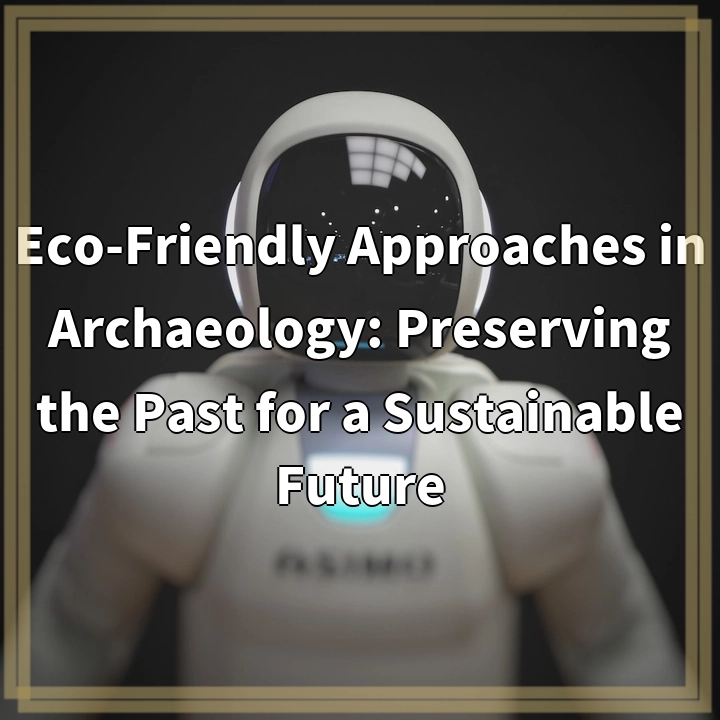
What is Eco-Friendly Approaches in Archaeology?
Eco-Friendly Approaches in Archaeology refer to the use of sustainable and environmentally-conscious practices in archaeological research and conservation. It involves integrating principles of conservation, environmental stewardship, and social responsibility into all aspects of archaeology.
Real-World Problems Associated with Eco-Friendly Approaches in Archaeology
While eco-friendly approaches in archaeology offer numerous benefits, there are also real-world challenges and issues that need to be confronted. These problems are multifaceted and require thoughtful consideration for the sustainable future of archaeological practices. Some of these challenges include:
1. Balancing Preservation and Development
The preservation of archaeological sites often conflicts with the demands of economic development and urban expansion. Finding a balance between preserving the past and meeting the needs of the present can be a significant challenge. It requires innovative strategies and stakeholder collaboration to ensure the long-term protection of archaeological heritage.
2. Environmental Impact of Excavation
Archaeological excavations can have significant environmental impacts, such as soil erosion, habitat disturbance, and depletion of natural resources. Addressing these impacts through eco-friendly approaches is essential to minimize the ecological footprint of archaeological research.
3. Sustainable Management of Archaeological Materials
The proper management and storage of archaeological materials present another challenge. Preserving artifacts and archaeological finds requires the use of appropriate conservation methods, which should adhere to eco-friendly practices. This includes utilizing non-harmful cleaning agents, implementing sustainable storage solutions, and promoting responsible artifact research and curation.
4. Community Engagement and Participation
Engaging and involving local communities in archaeological projects is crucial for their success and sustainability. However, building trust, addressing concerns, and incorporating local knowledge can be complex and time-consuming. Eco-friendly archaeology should focus on empowering communities and ensuring their active participation throughout the research and conservation process.
5. Funding and Resource Limitations
Like any other field, eco-friendly approaches in archaeology often encounter financial constraints and resource limitations. Securing funding for sustainable practices, implementing green technologies, and conducting extensive research can be challenging. Finding innovative funding sources and collaborating with governmental and non-governmental organizations becomes necessary to overcome these limitations.

Solutions for the Challenges in Eco-Friendly Approaches in Archaeology
While the challenges in implementing eco-friendly approaches in archaeology are significant, there are several solutions that can help address them and pave the way for a more sustainable future. Some of these solutions include:
1. Collaborative Planning and Policy Development
Encouraging collaboration between archaeologists, government agencies, developers, and local communities can help find a balance between preservation and development. Developing comprehensive policies and guidelines that incorporate ecological considerations will ensure that archaeological sites are protected while accommodating sustainable development.
2. Adoption of Low-Impact Excavation Techniques
Implementing low-impact excavation techniques, such as using geotextile materials to protect soil layers, can minimize environmental damage caused during archaeological digs. Additionally, utilizing technologies like remote sensing and LiDAR can minimize the need for extensive excavation, reducing ecological impacts.
3. Sustainable Conservation Practices
Applying sustainable conservation practices involves using eco-friendly cleaning agents, energy-efficient storage solutions, and environmentally conscious restoration techniques. This includes opting for environmentally friendly materials and methods that minimize the use of harmful chemicals and reduce energy consumption.
4. Engaging and Empowering Local Communities
Engaging local communities throughout the process of archaeological research and conservation is vital. This involves creating platforms for community involvement, incorporating local knowledge, and establishing partnerships that provide meaningful benefits to the community. By building trust and involving stakeholders, the sustainable management of archaeological sites can be ensured.
5. Diversifying Funding Sources
To overcome funding and resource limitations, diversifying funding sources can be beneficial. This could involve seeking grants from environmental or conservation organizations, partnering with private sector entities that support sustainability initiatives, and advocating for increased government funding for eco-friendly archaeological practices.















